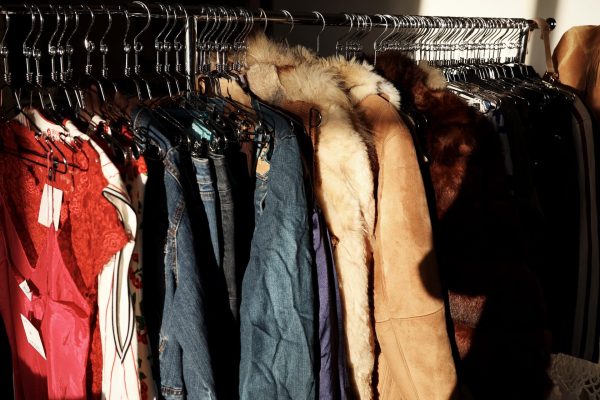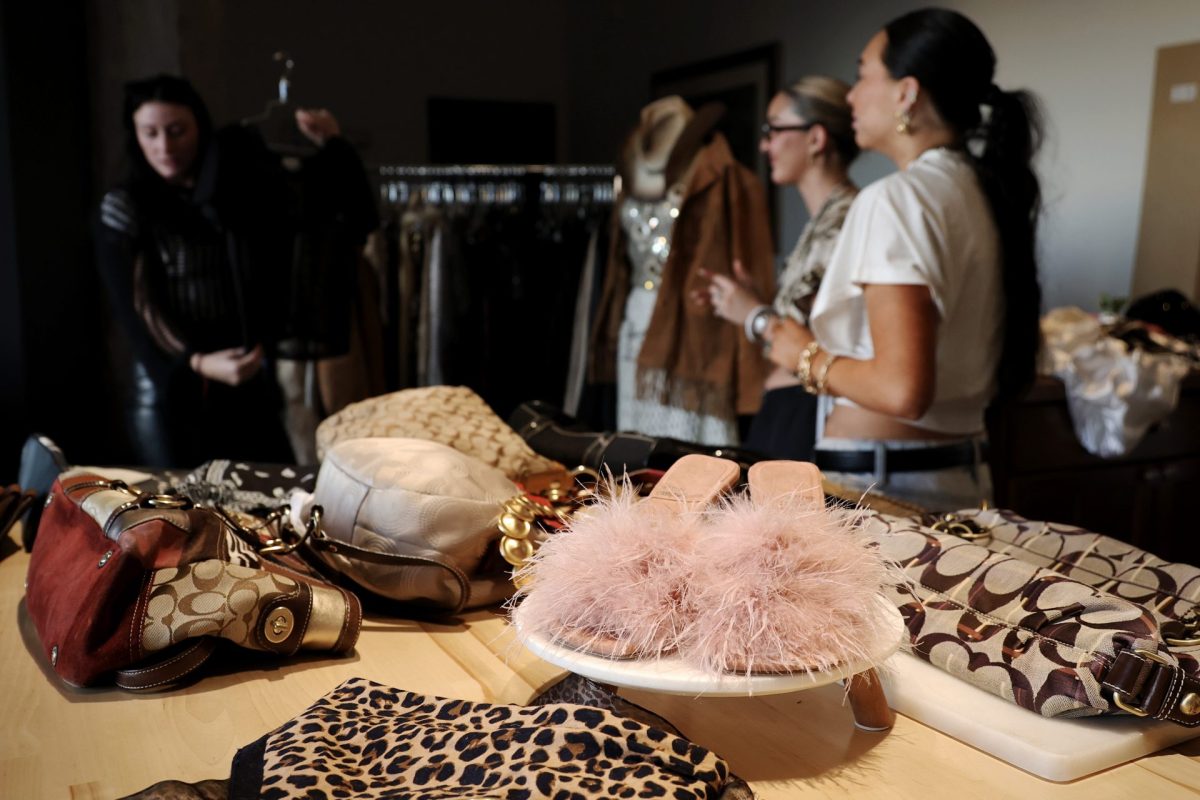“I’d rather go naked than wear fur,” critics and campaign ads once argued. For decades, fur has been more than a fabric — it’s been a statement, status symbol and the center of controversy. Once a marker of prestige, the furs that have kept people warm for centuries have evolved into one of the hairiest materials to wear.
A decade ago, roughly 140 million animals were killed in a year for their fur. While that number has dropped, millions are still exploited and farmed for fur. Kering, who manages luxury brands like Gucci, Saint Laurent, Bottega Veneta, and Balenciaga, announced they were going fur-free in 2021, with many high-end retailers like Saks following suit.
Yet the fabric is making another comeback. Between new legislation, resurgent fashion trends and sustainability concerns, the fur debate is back. Nearly twenty U.S. cities have restricted fur sales, and in 2023, California implemented a statewide ban on new fur products. Earlier this year, Denver voters considered a similar measure.
Locally, Chicago’s city council recently saw a proposal to ban the product. After raising hairs, the proposal was struck down in a 26-19 vote, with long-time retailers claiming the change would be an economic blow to the city’s remaining fur shops.
As policy disrupts the fur industry, fashion trends push the product back into the mainstream. New York Fashion Week saw a flood of furs in all different textures and colors this season. Despite lingering controversy, it seems the future of fashion is once again furry. While anti-fur ads and tofu cream pie attacks have died down, many still choose faux for ethical reasons.
Off the runway, social media impacts fashion trends. “It’s where we go to see what people are wearing, what brands they’re into, and how to style it,” Rachel Jimenez Panca, founder of Rachel J Styling and adjunct professor at Columbia College Chicago, said.
Trends like TikTok’s mob-wife aesthetic champion loud prints, statement jewelry and fur. Other online fashion trends reflect the rise of “loud luxury” — a style that features unapologetically bold fashion picks.
Panca says those rocking fur often reach for mink, fox, raccoon and sable. If properly maintained, furs can last forever, with some shoppers looking to buy second-hand pieces over new.
“You can spot vintage fur right away,” Panca said. “In the silhouette, the way the shoulders drape, there’s just certain things. When you see a vintage piece, you kind of know.”
Genuine new furs can run someone thousands, but thrifting a vintage piece can slash those costs. Vintage resellers who frequent second-hand stores, however, can create a problem for those in need.
“I used to have a different attitude about shopping secondhand,” Panca, whose students introduced her to thrifting, said. “Now it’s just like a treasure hunt. The same goes for fur.”
While many refuse to wear used clothing, buying secondhand is the most sustainable option for furs. Most faux options are made from petroleum-based synthetics that are non biodegradable. Lab-grown fur is emerging as a potential solution to the debate, but for now, secondhand furs are gaining attention.
Rylee Migliore and Emily Rybski founded their vintage sourcing company, Overdressedlocal, last fall. Their friendship began at Western Michigan University, where the sorority sisters spent their free time thrifting. “It started our senior year. We were thrifting like crazy, our clothes started taking over our college apartment,” Migliore said. “We thought it would be fun to style and thrift for other people.”
Migliore and Rybski have made secondhand fashion, including fur, a focal point of their collection. The two now spend nearly forty hours a week sourcing and selling vintage clothing in their pop-up storefront. Later this year, the pair will open a permanent location near Bridgeport.

Migliore and Rybski tag and price their items, and do all of their own inventory, marketing and branding. Their collection includes hundreds of items — shoes, handbags, accessories, clothes and outerwear, making an appeal to shoppers concerned with sustainability. The girls also try to incorporate elements of their personal style into their shop. Chunky rings, bold animal prints, fringe and patterned denim are all elements the pair look for while sourcing unique pieces.
“The quality in the last decade has changed so much. Everything feels like fast fashion. You wear it once, wash it and it falls apart,” Rybski said.
China, the world’s largest textile producer, sees over 20 million tons of clothes reach their landfills each year. Part of the problem is attributed to fast-fashion brands like Shein and Temu which offer shoppers trendy looks for dirt-cheap.
Migliore and Rybski, however, stress the importance of quality over quantity. “I think it’s just so much fun when you can get a secondhand piece and style it to fit in with the new trends going on,” Migliore said.
When sourcing for Overdressedlocal, quality materials and reputable brand names are two things the girls look for. They also say they avoid “cheap” fabrics, prioritizing materials like cotton and silk.
Still, secondhand shopping comes with its own dilemmas. Vintage resellers on platforms like Depop have drawn criticism for making affordable fashion less accessible. Unlike other resellers, Migliore and Rybski say they’re less interested in making a profit and more focused on connecting with other creatives in the industry, and helping shoppers like Panca change their mindset about thrifting — a stigma the pair encounter often. “I had a family member say to us once, ‘So you sell other people’s garbage?’” Rybski said.
While the rise of thrifting might indicate an economic downturn, the popularity among Gen-Z shoppers continues. Now, Migliore and Rybski say they use social media to promote their store and to help them find inspo for their next haul.
Online trends like the mob-wife aesthetic have brought shoppers to Overdressedlocal who are looking specifically for vintage furs. “Shopping secondhand fur is really important (to us) and that’s what we emphasize in our store,” Migliore said. “We’re not buying new fur, it’s all secondhand.”
While thrifting is better for the environment, to the untrained eye it could be hard to identify new furs from old. That’s why animal rights activists generally argue that choosing to wear any kind of fur sends the message that all furs are acceptable.
With social media playing a role in shifting fashion attitudes in younger generations, some have distanced themselves from the fur debate. “I personally prefer real fur, it’s so fun — I love fur!” Migliore said. “Economically, it’s cheaper to buy secondhand. You feel bad for the animals, but you feel better about not buying new fur.”
As activists argue that vintage fur keeps the industry’s image alive, the decades-old fur debate lives on, with policy changes bringing new life into the discussion. For now, the choice to wear fur is still in the hands of shoppers, who ultimately decide what the “faux” fashion stands for.
Related Stories:
- Beloved Paris fashion brand Y/Project shuts down
- How Chicago Fashion Week will change the fashion industry
- Models show off Mexican-Contemporary designs at Latinx Fashion Show
delivered to your inbox every Monday.
Support Student Journalism!
The DePaulia is DePaul University’s award-winning, editorially independent student newspaper. Since 1923, student journalists have produced high-quality, on-the-ground reporting that informs our campus and city.
We rely on reader support to keep doing what we do. Donations are tax deductible through DePaul's giving page.



